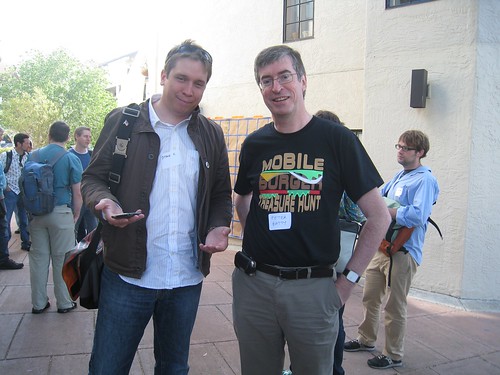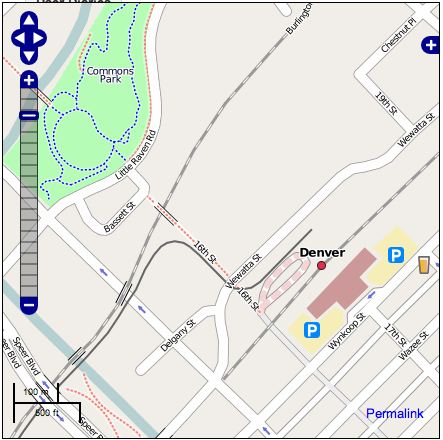So as I talked about in my
previous post, Ordnance Survey is going to make its small scale data freely available. I think that in many ways, OpenStreetMap has been a major influence in making this happen. The growth of OpenStreetMap has increased the awareness of the benefits of free geospatial data, and it was becoming apparent that there would no longer be a significant market for the Ordnance Survey to sell small scale map data, certainly not at the sort of high prices it has traditionally charged.
However, the fact that this is happening raises some major questions about the future of OpenStreetMap in the UK, and could even lead to its demise there. At the very least, it dramatically changes the nature of OpenStreetMap in the UK. People have different motivations for contributing to OpenStreetMap. Some do it just because they think it's fun, and they like mapping their local area. For many people there is motivation around the fact that they believe it's important to have freely available and open map data. Suddenly at a stroke, the second motivation is seriously diminished (in the UK), as this aim has been achieved if the Ordnance Survey makes a high quality and very complete dataset freely available. Now we don't know for sure yet what Ordnance Survey will release - it is possible that it could just make raster map data available (like Google does). But it seems likely to me that they will probably make the small scale vector data available too - there is certainly lots of demand for this.
We also don't know the licensing terms yet, but it seems likely that the Ordnance Survey data will be in the public domain. So ironically it will be more open than OpenStreetMap, whose current and new licenses are fairly "viral" - roughly speaking they say that if you enhance the data, you have to make those enhancements available on the same terms as the original data (i.e. the enhanced data has to be freely available). This more or less precludes having a commercial ecosystem of "value added" data providers on top of OpenStreetMap. And many commercial companies, like Google, have expressed concern about using OpenStreetMap because of licensing (even with the new license that should be rolled out soon). But potentially Google, Microsoft et al will be free to use the Ordnance Survey data with no constraints.
So where does this leave OpenStreetMap in the UK? It is interesting to compare the situation in the UK with the US. OpenStreetMap took off very quickly in the UK, driven in many ways by frustration with the Ordnance Survey and the lack of free map data. In the US it has taken off more slowly, and this is widely thought to be because there are more sources of free map data (albeit often poor quality ones, as I've discussed previously). There has also been a lot of spirited discussion recently on the OpenStreetMap mailing lists about the pros and cons of importing TIGER data as a starting point in the US. There is a strong contingent that argues that cleaning up existing data is less interesting and motivating than mapping something from scratch, and that this is why there is less interest in OpenStreetMap in the US than the UK. The counter-argument, which I support in general, is that we are much further along in the US with TIGER data than we would have been without it. But anyway, suddenly the UK finds itself in a similar situation to the US, but with a much higher quality free data source (assuming there are no licensing issues, which there won't be if the data is public domain, which is what I expect).
This raises a lot of practical issues in terms of data imports, which we have already faced (but not solved) with OpenStreetMap in the US. OpenStreetMap in the UK has a rich database already -
according to Muki Haklay, it is about 65% complete in terms of geometry, and 25% complete if you consider attributes. Now you have a 100% complete high quality dataset that you could import, but how do you reconcile this with existing data? This is a complex problem to solve. And how about subsequent updates? Do you just do a one time import of OS data, and let the community do updates after that? Will people be motivated to do this, if the OS is updating its own dataset for free in parallel? Is there some way of using the OS data for items that they maintain, and having OpenStreetMap focus on more detailed items (benches, trash cans / bins, etc)?
The ideal world might be to have some sort of integration between OpenStreetMap and the Ordnance Survey. I have spoken often about the disruptive impact of crowdsourcing and how government agencies and commercial companies need to leverage the power of this approach to bring down the cost of creating and maintaining data. Now that Ordnance Survey will have reduced revenues and require increased subsidies from taxpayers, they will be under increasing pressure to cut costs. If there was a way to leverage the power of the thriving OpenStreetMap community in the UK that could reduce costs quite significantly. There are challenges with doing this and it may just be wishful thinking ... but we can hope :).
So anyway, this move raises lots of questions about what OpenStreetMap will look like in the UK in future. If you regarded the mission of OpenStreetMap in the UK as being to create a free, open and high quality map of the UK, you can argue that the mission is completed (or will be in April), perhaps in a slightly unexpected and sudden fashion, like the falling of the Berlin Wall. Steve Coast quotes Gandhi
on the OpenGeoData blog: "First they ignore you, then they laugh at you, then they fight you, then you win." The question is should we add "... and then you die"? (Or less drastically perhaps, retire, or have no reason to exist any more?)
There are some other aspects to OpenStreetMap of course, like I alluded to before - making more detailed maps of aspects of your neighborhood than the Ordnance Survey does for example. But working out how those other aspects can coexist alongside the new reality of free OS data is complex. And how many OpenStreetMappers will lose the incentive to participate in this new world, if there is an alternative source of good quality, free and open data? We live in interesting times in the geo world today - this is the second hugely disruptive announcement (following the
Google earthquake) in a month or so!
I should just reiterate that of course all these specific questions apply to OpenStreetMap in the UK, they don't affect its aims and benefits in the rest of the world - except that a lot of energy for the global movement has come from the UK, so if that energy diminishes it could have some knock-on effect in the rest of the world. But I hope not!
This move by Ordnance Survey will also increase pressure on National Mapping Agencies in other countries to make more data freely available (where it isn't already).



![Reblog this post [with Zemanta]](http://img.zemanta.com/reblog_e.png?x-id=861e9204-636d-4f96-8c55-7acb9aa39156)
![Reblog this post [with Zemanta]](http://img.zemanta.com/reblog_e.png?x-id=e051a486-7bbd-4a3f-b655-83baa89dc55f)


